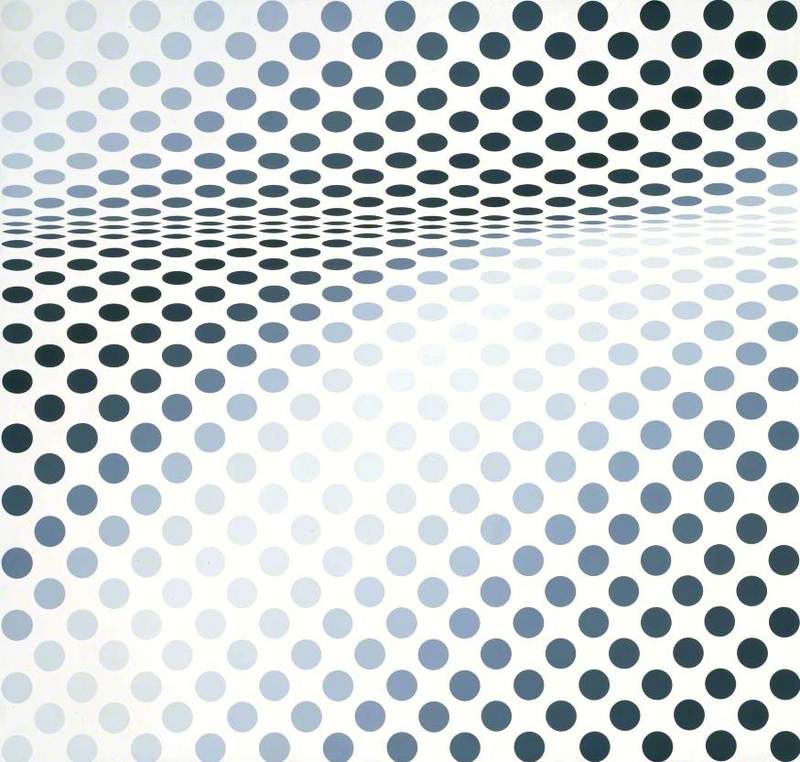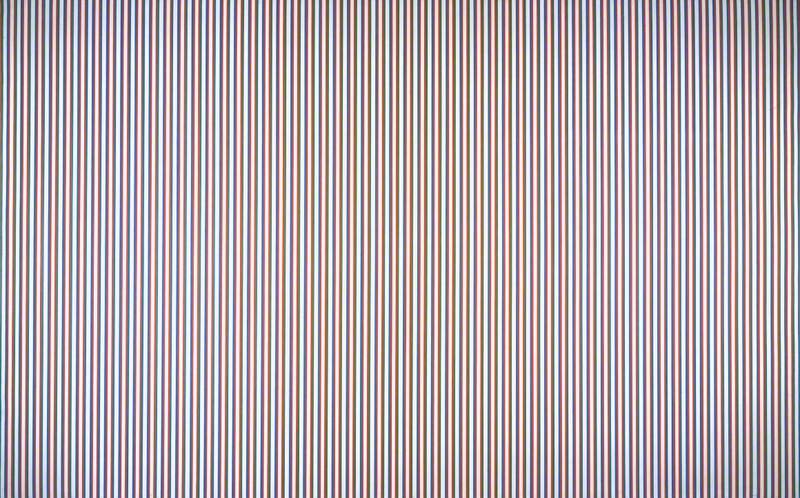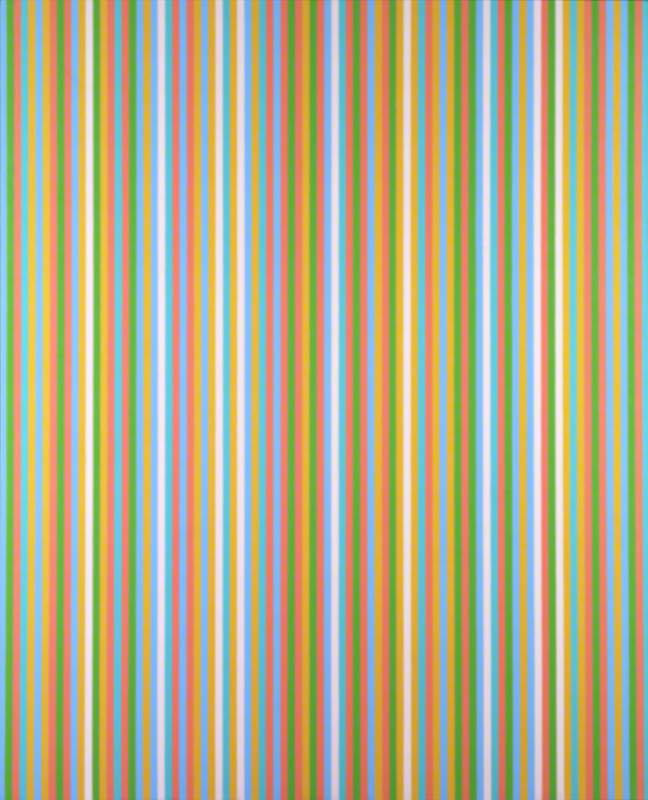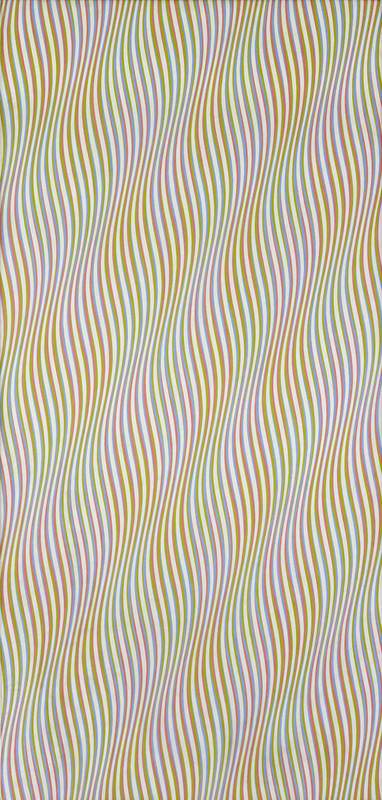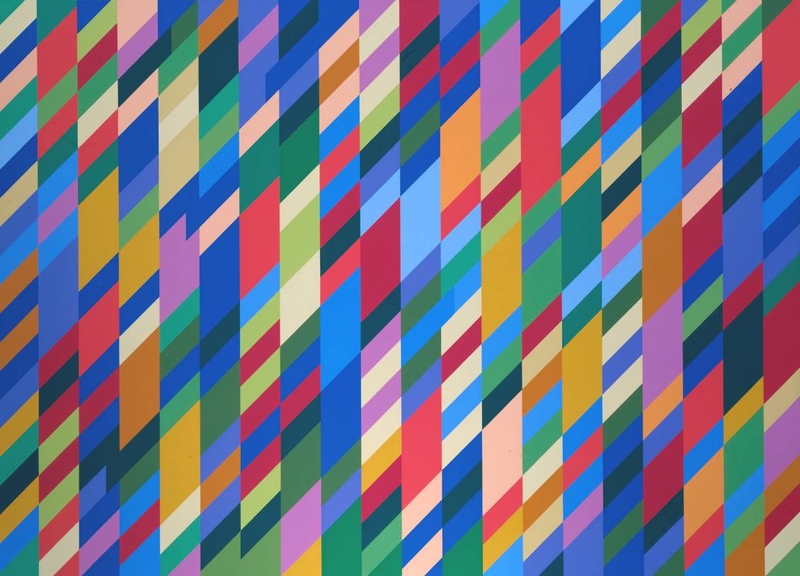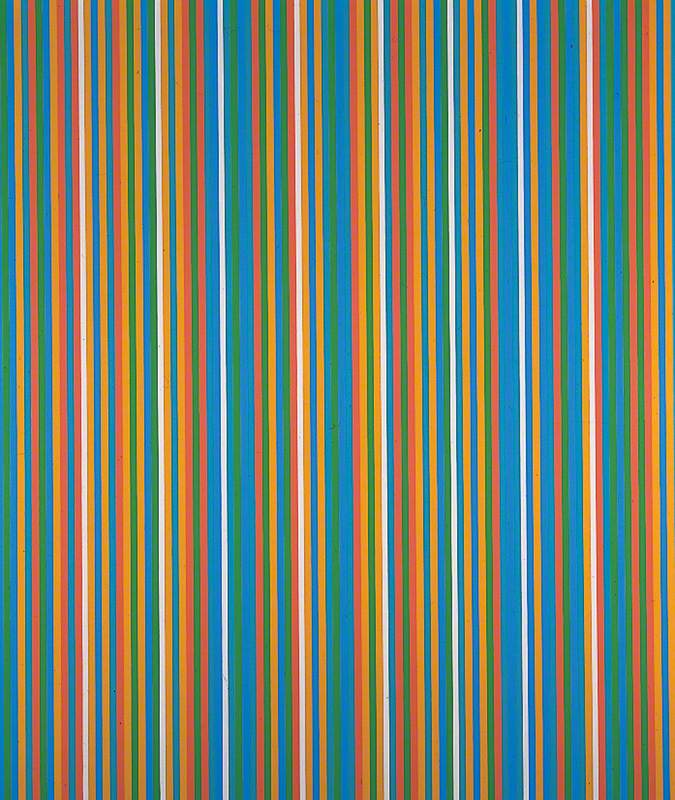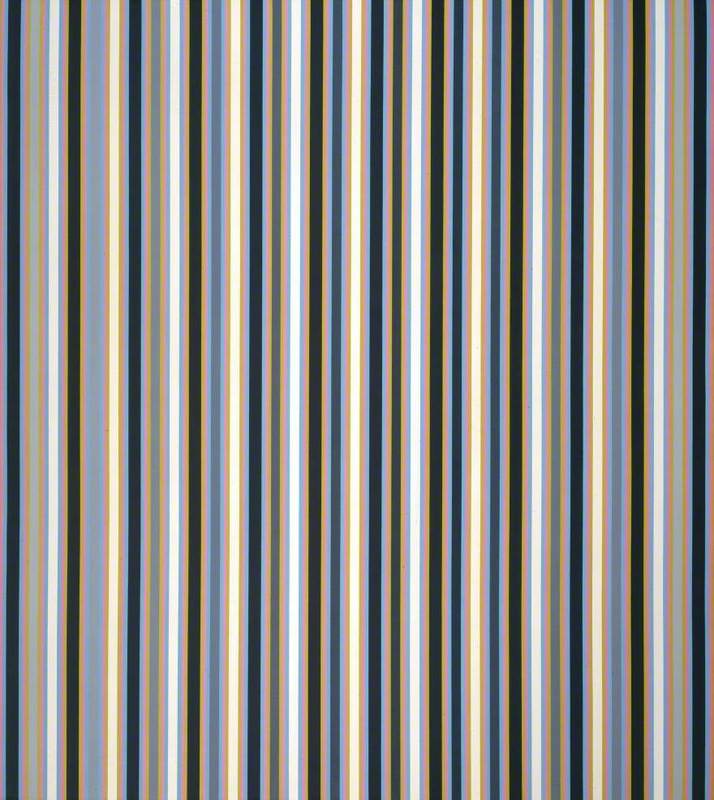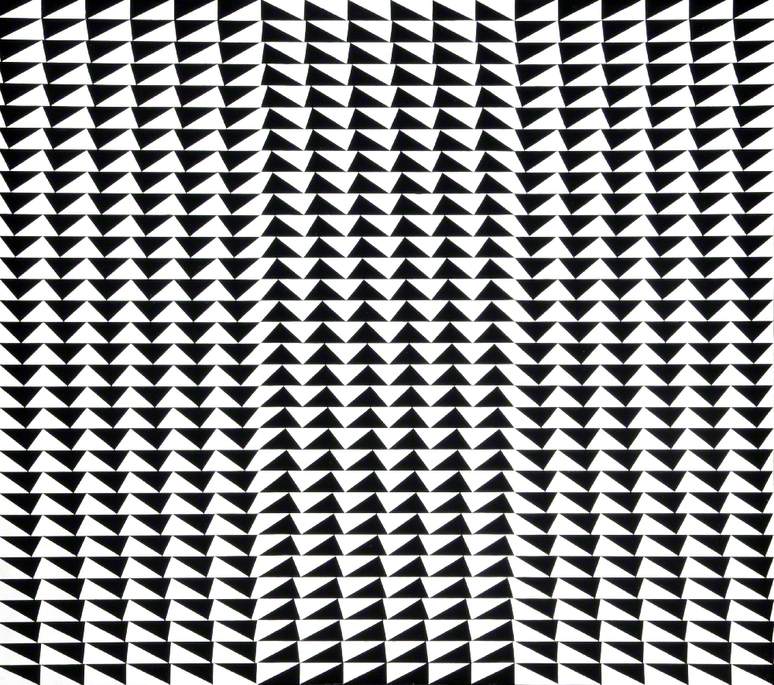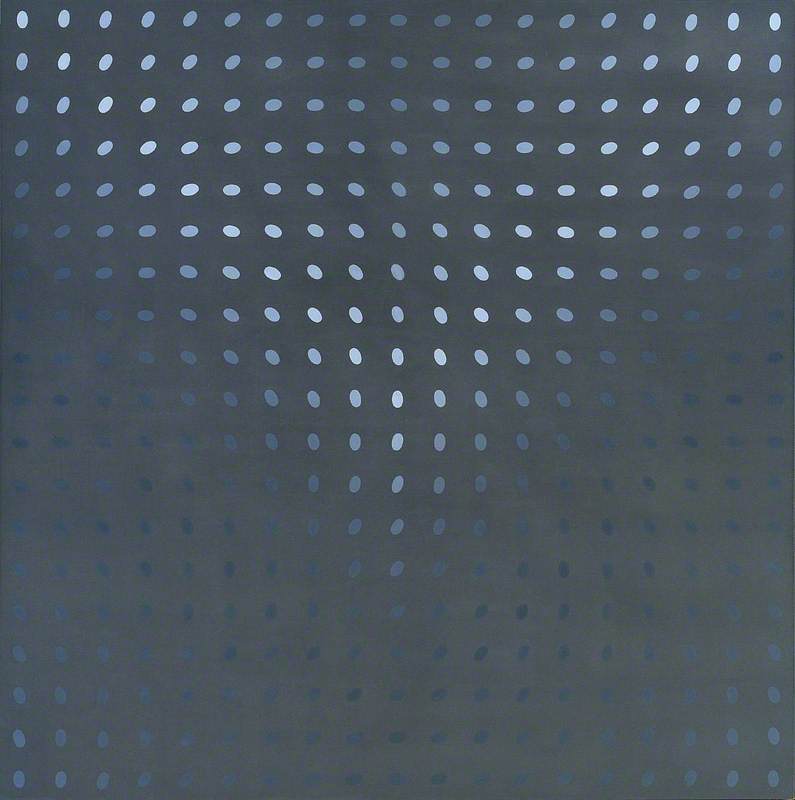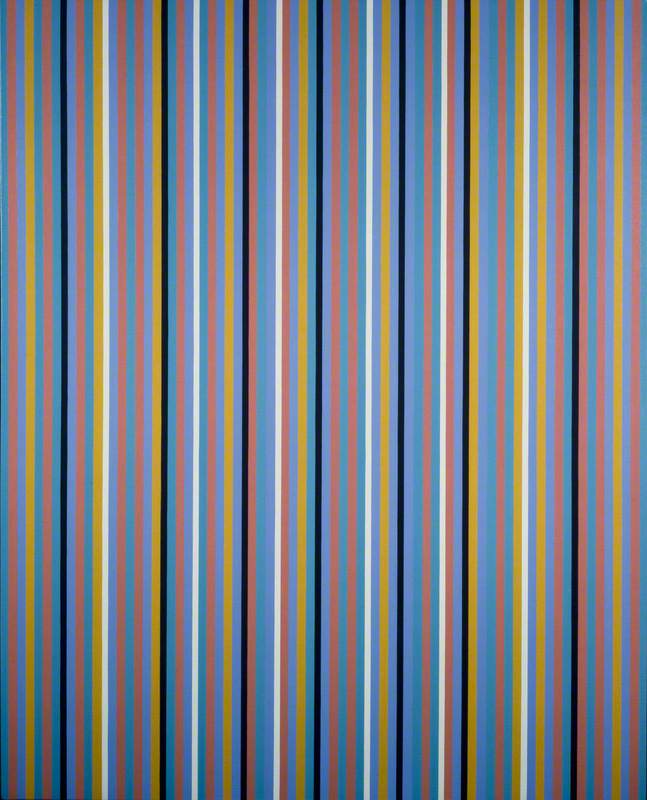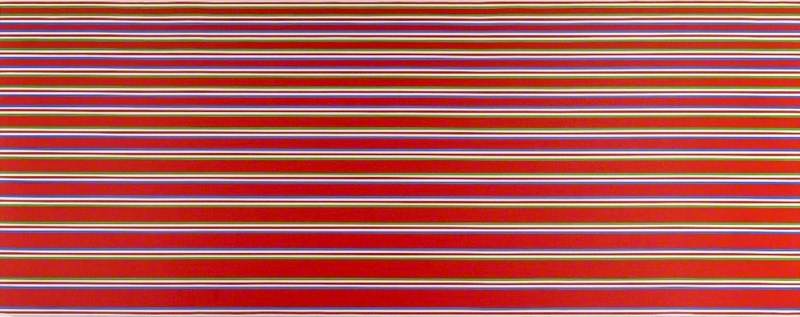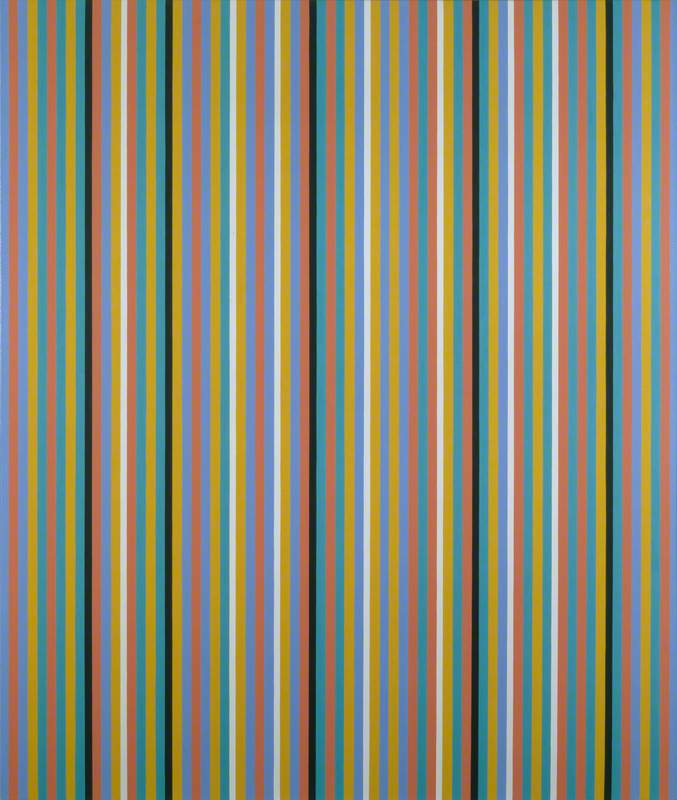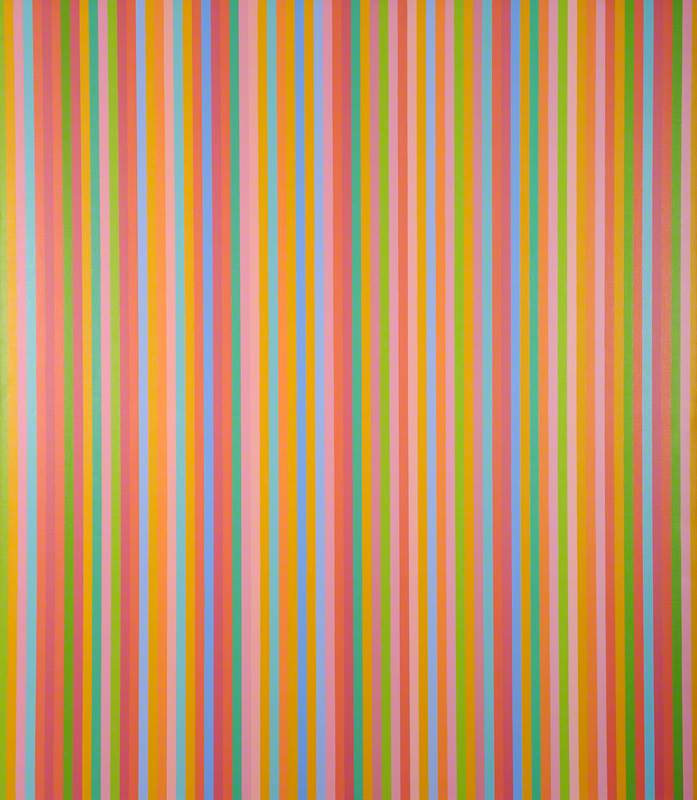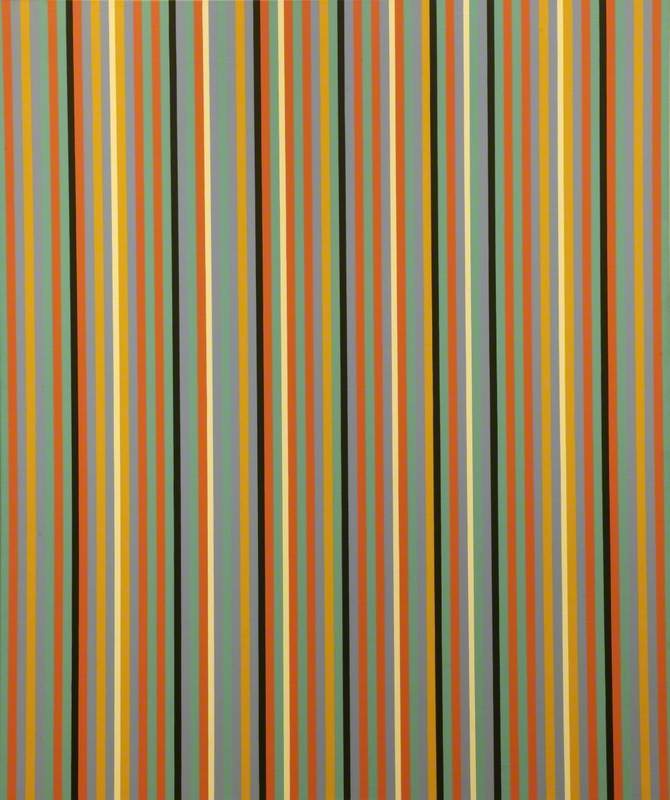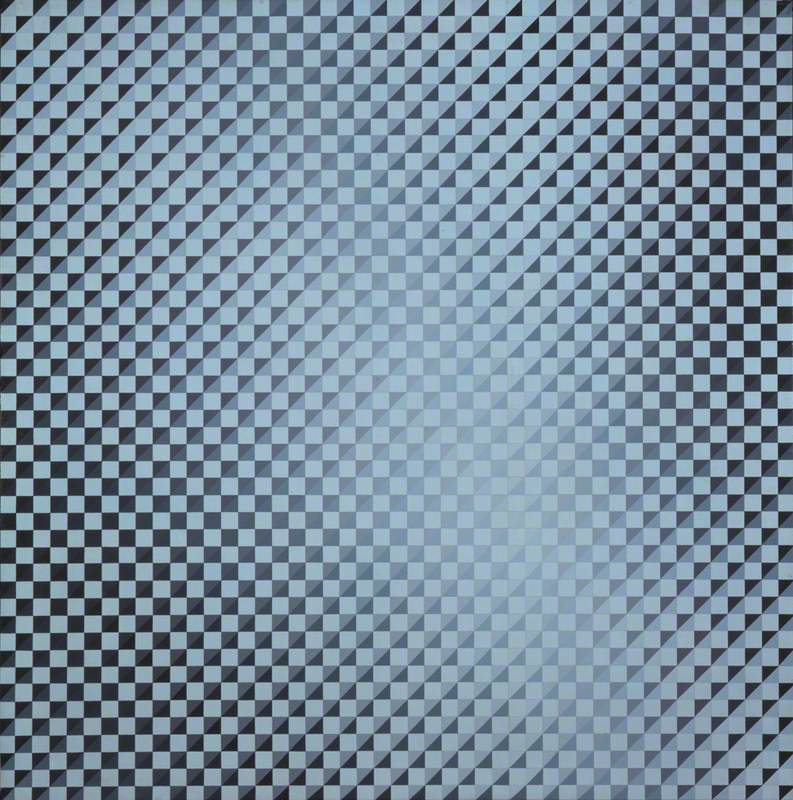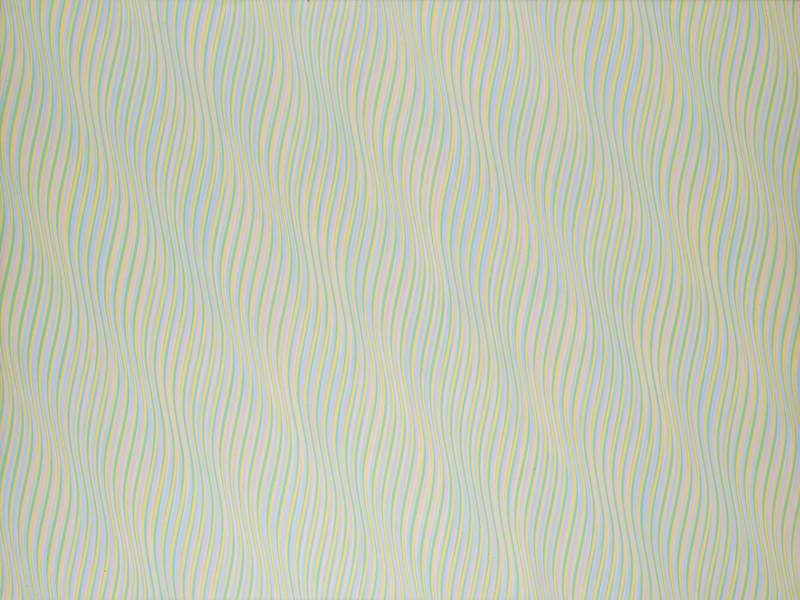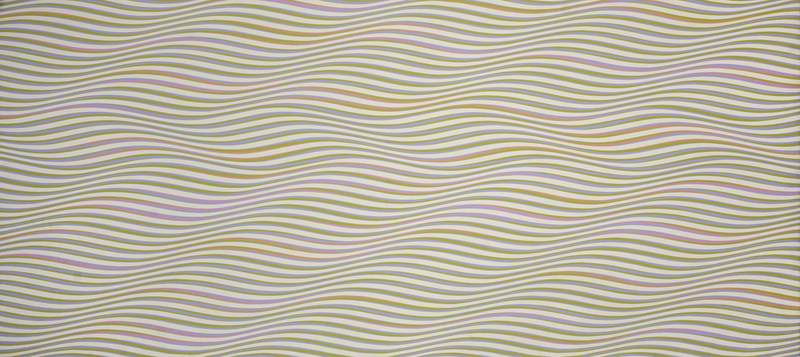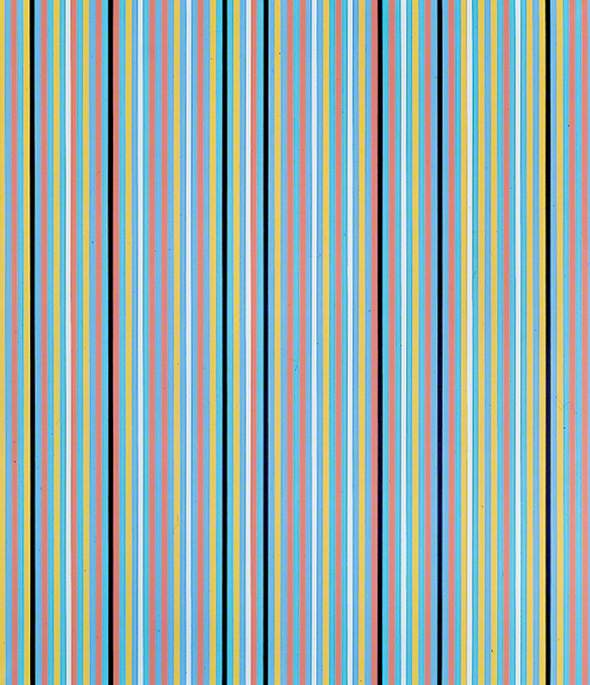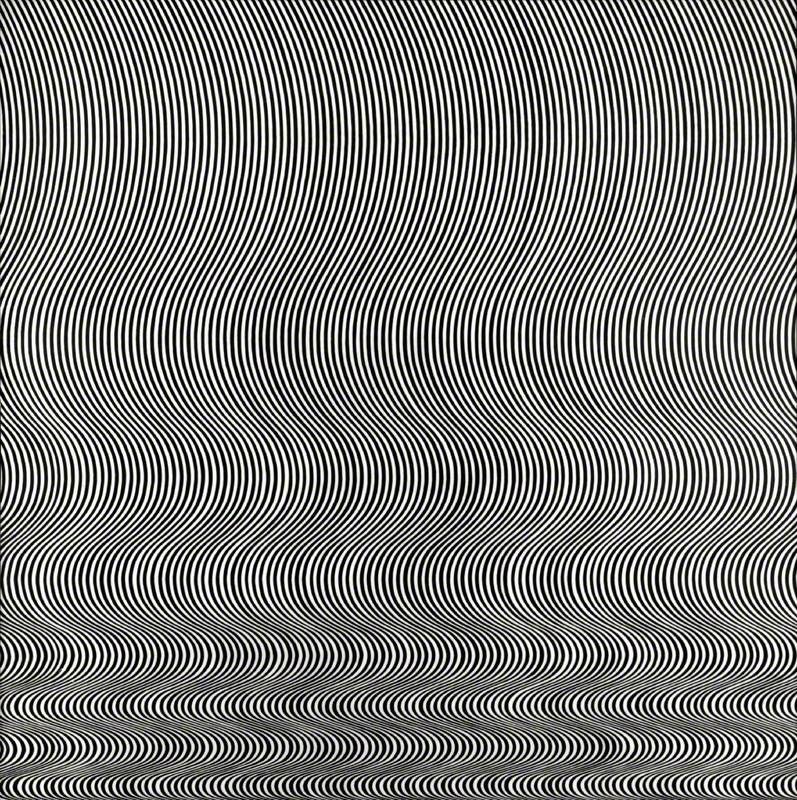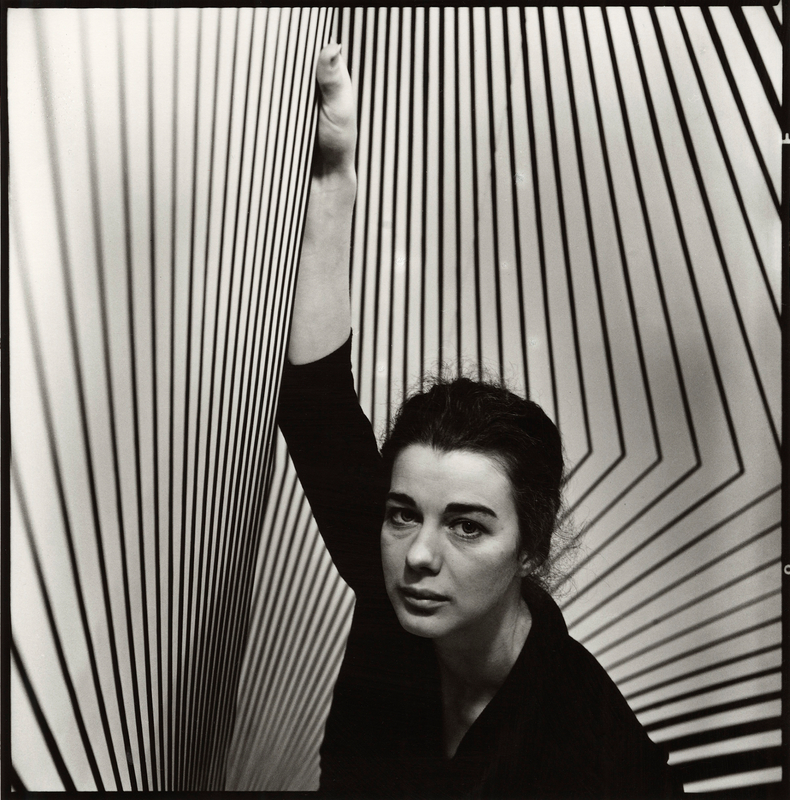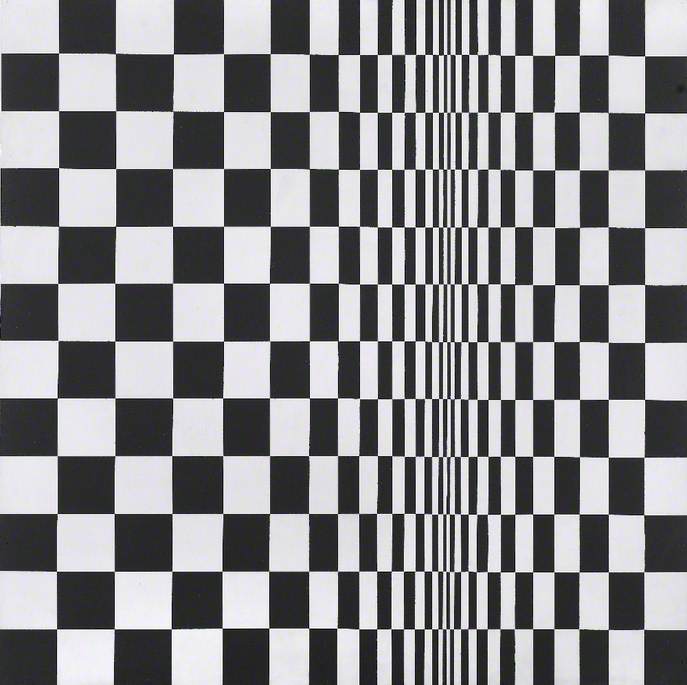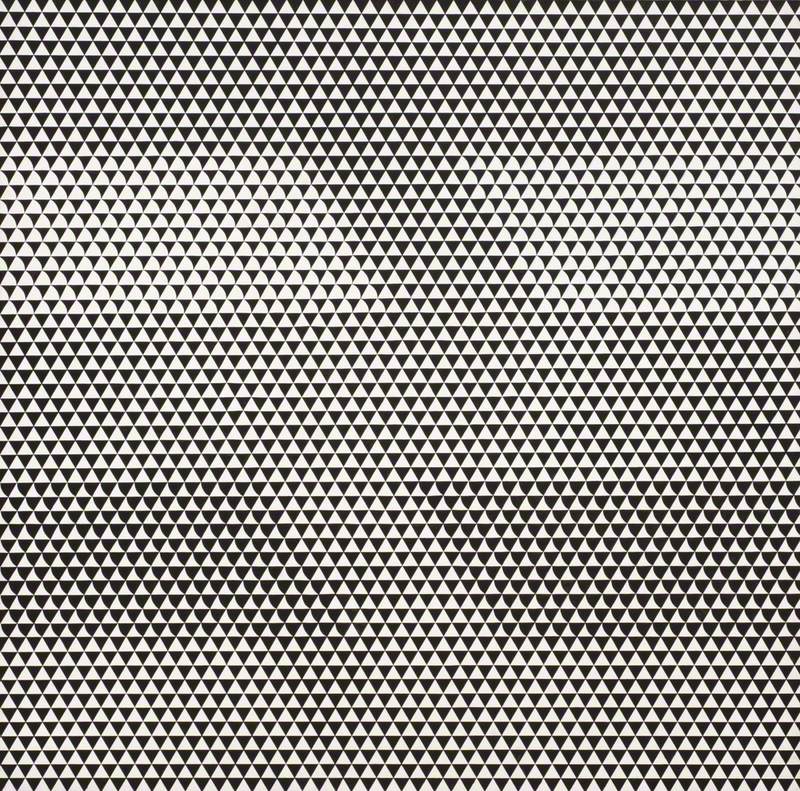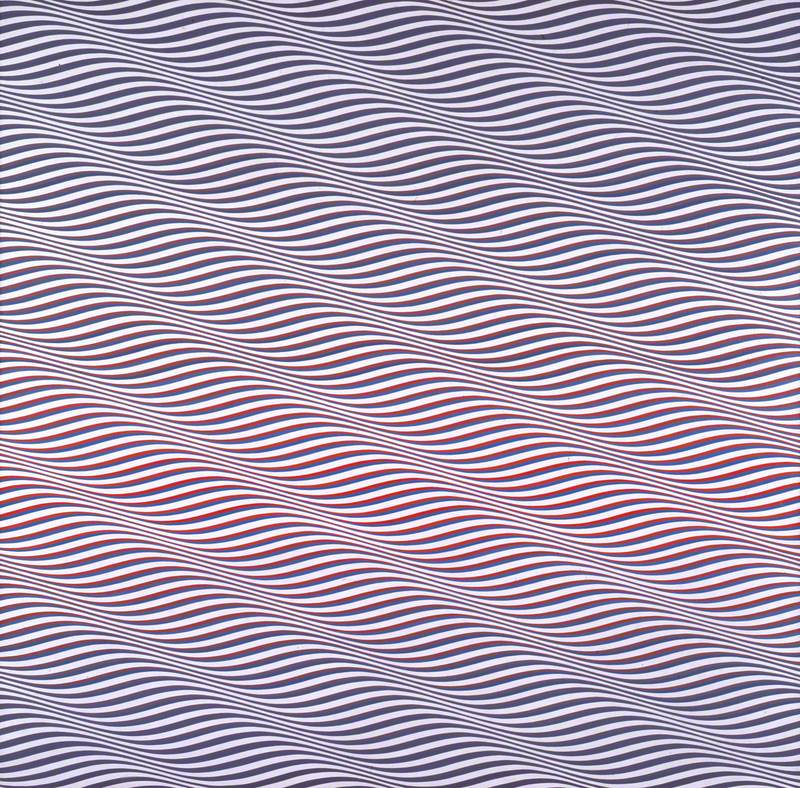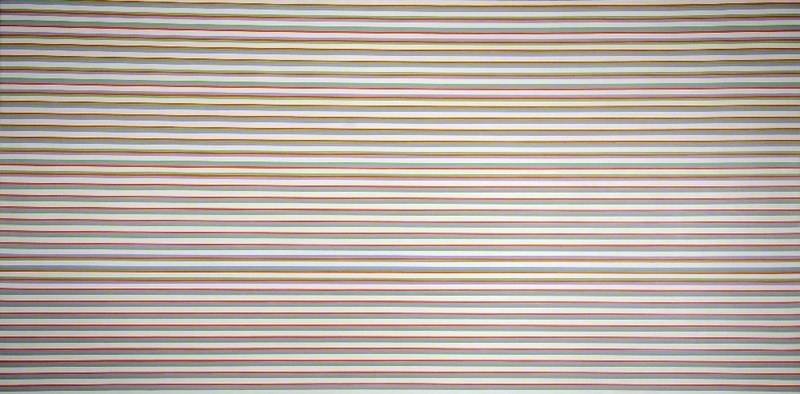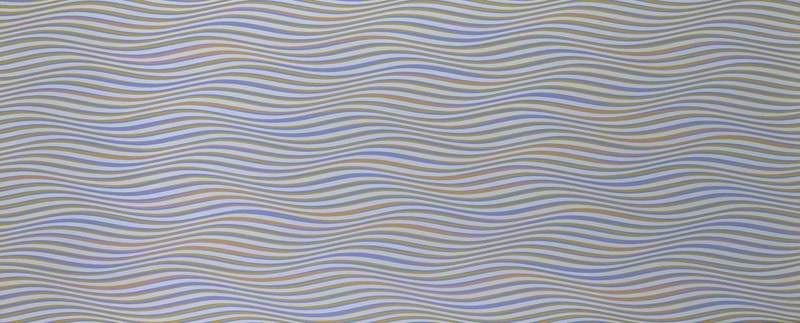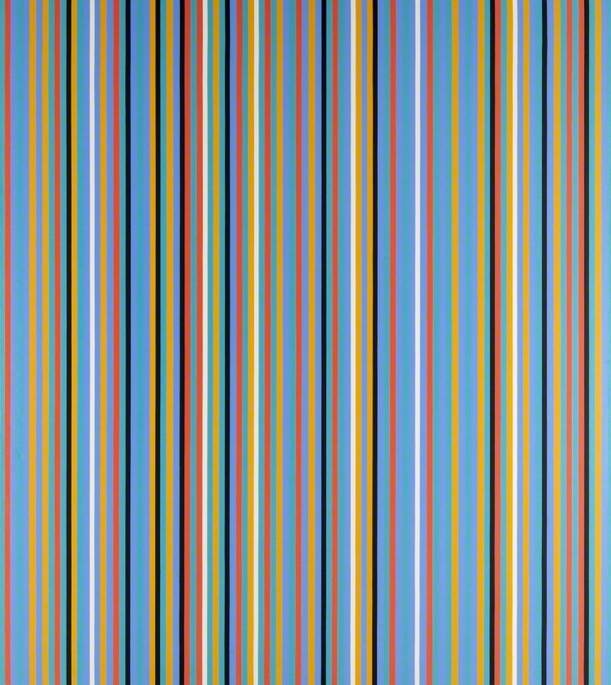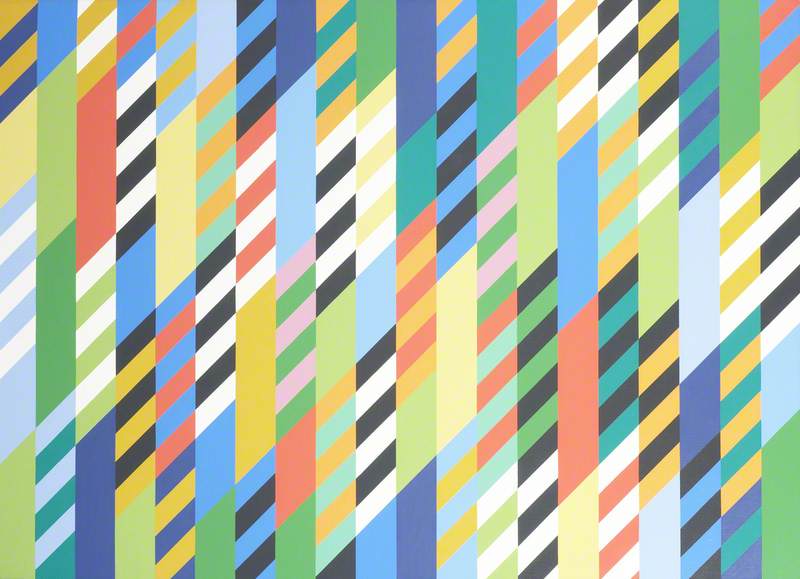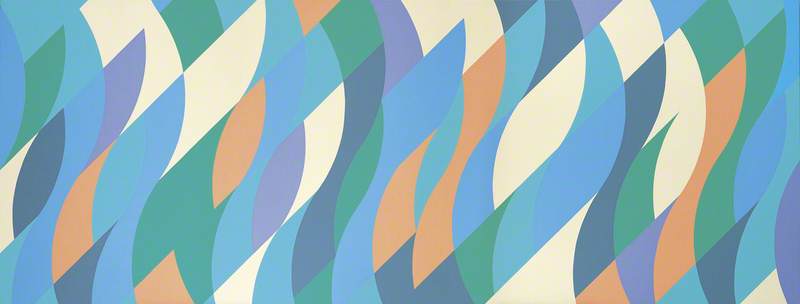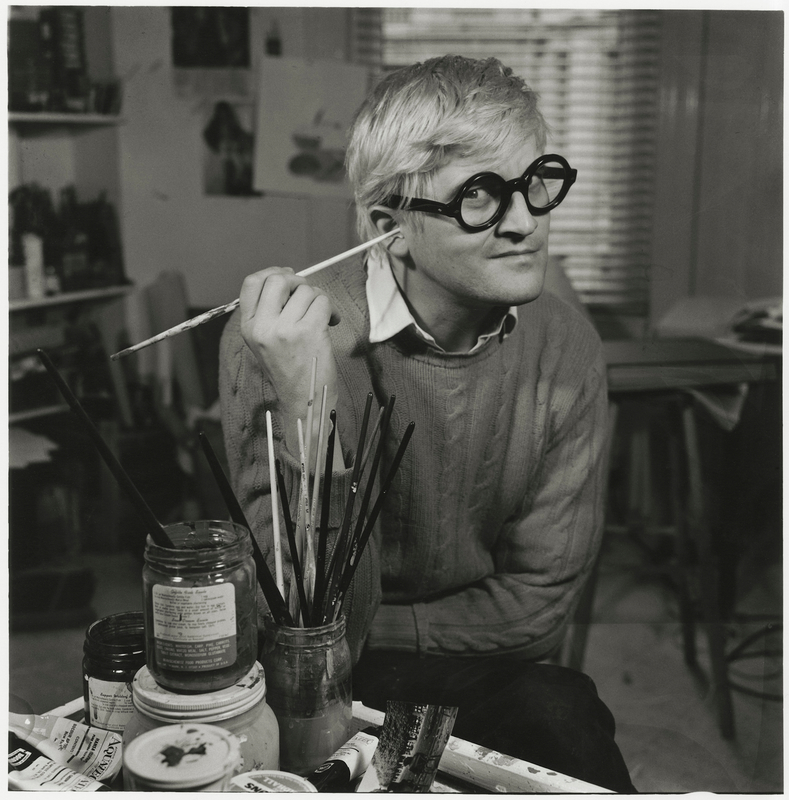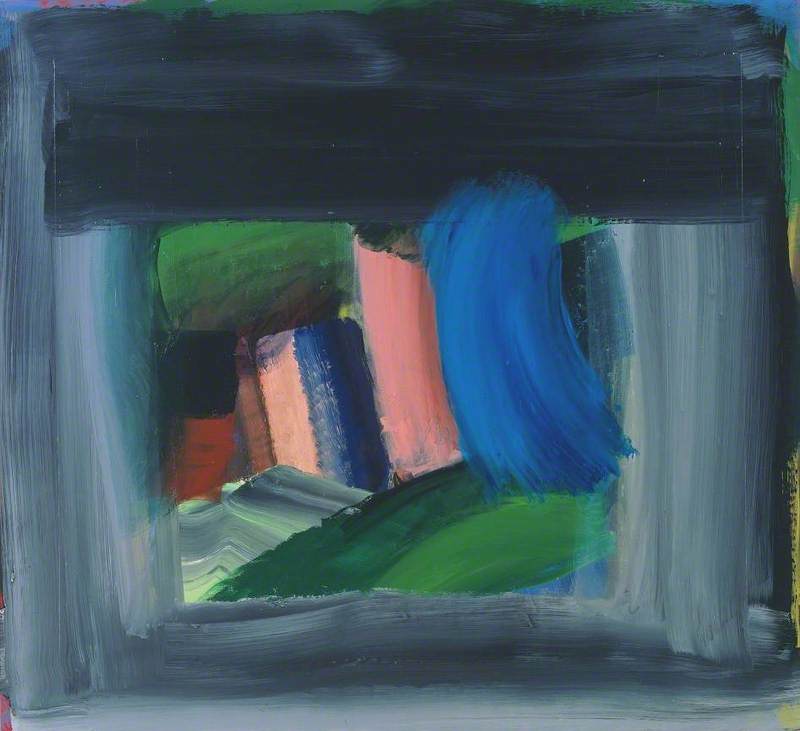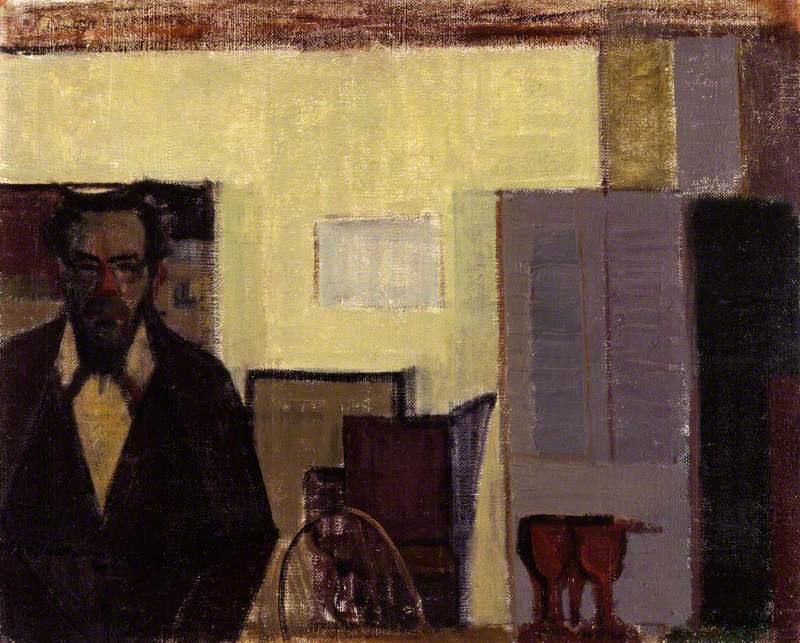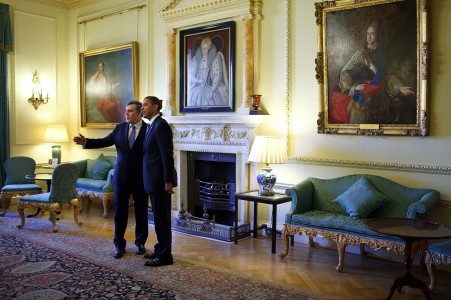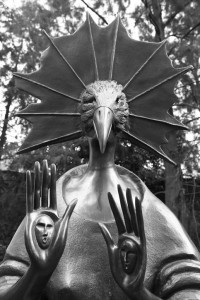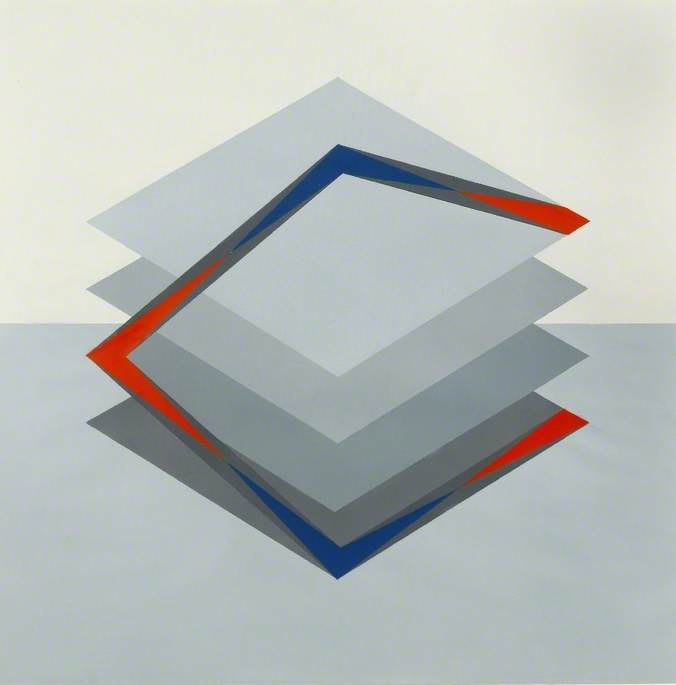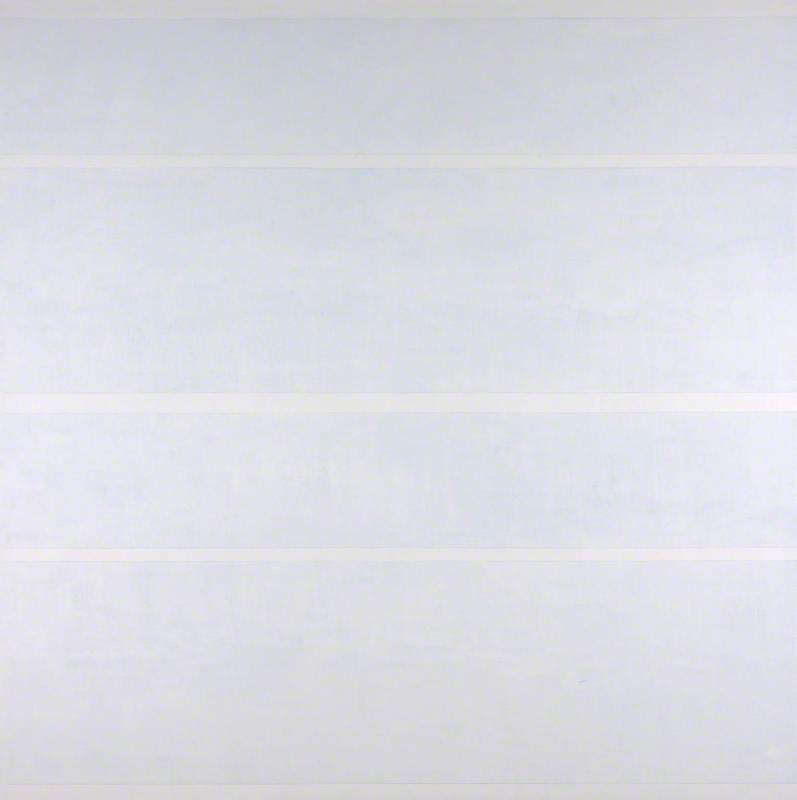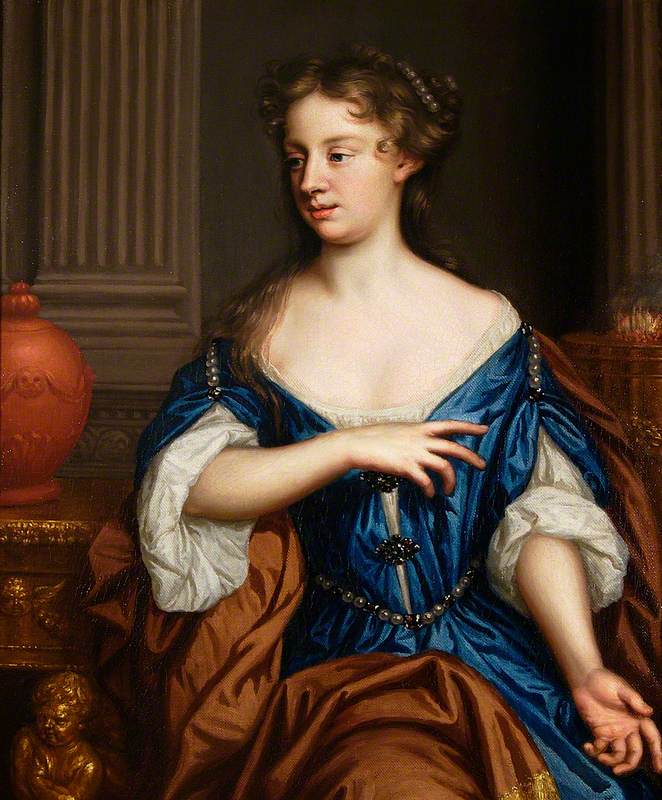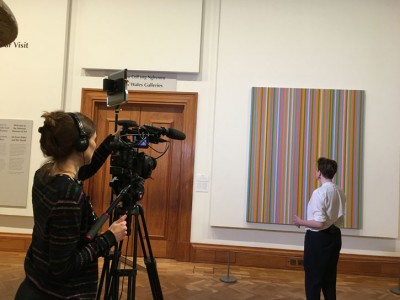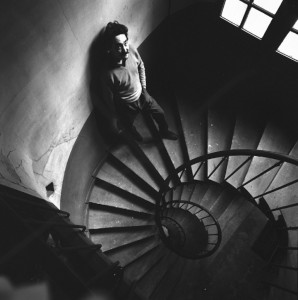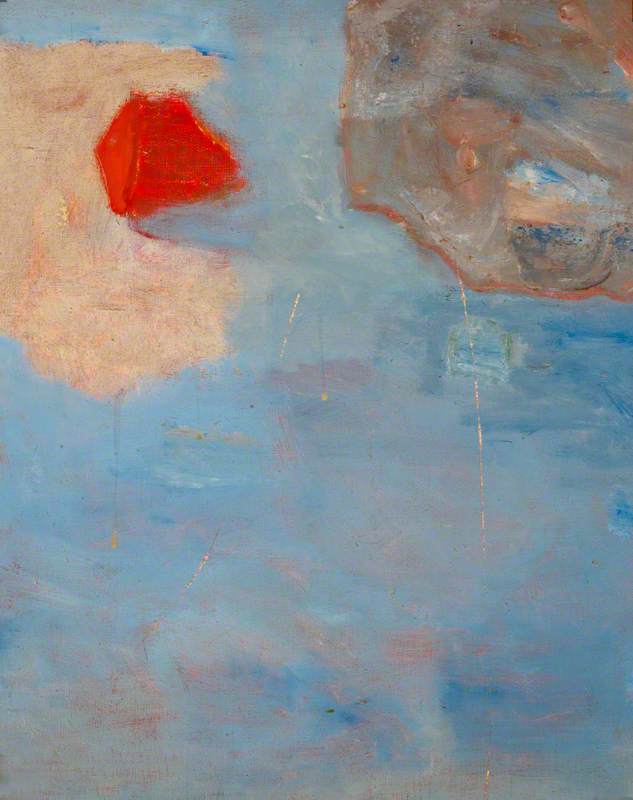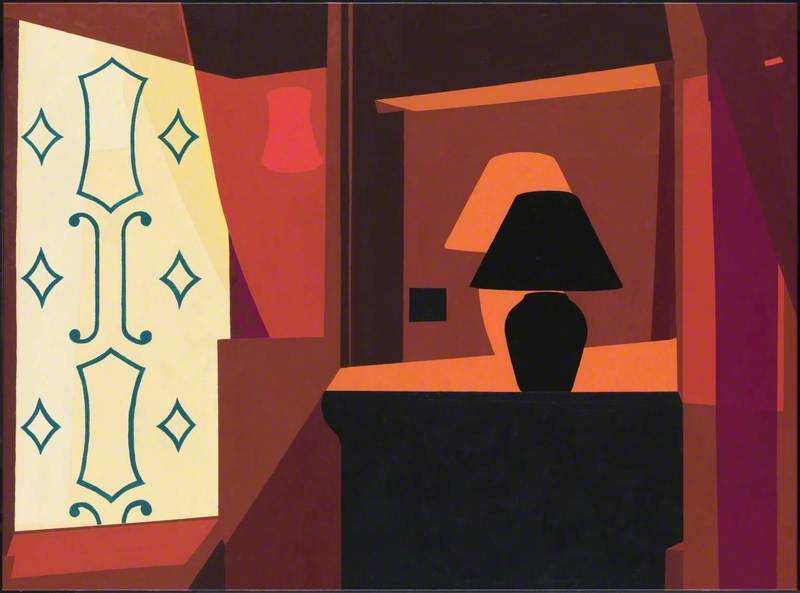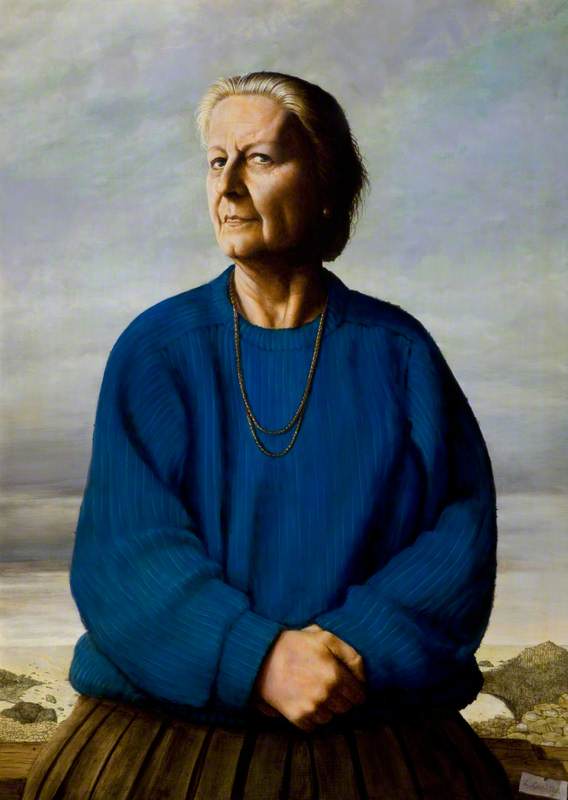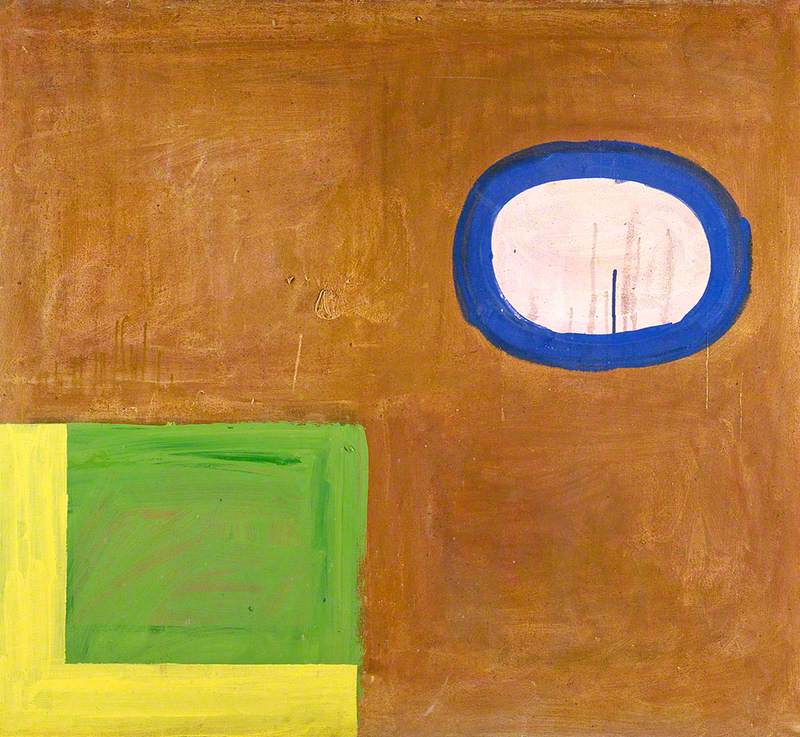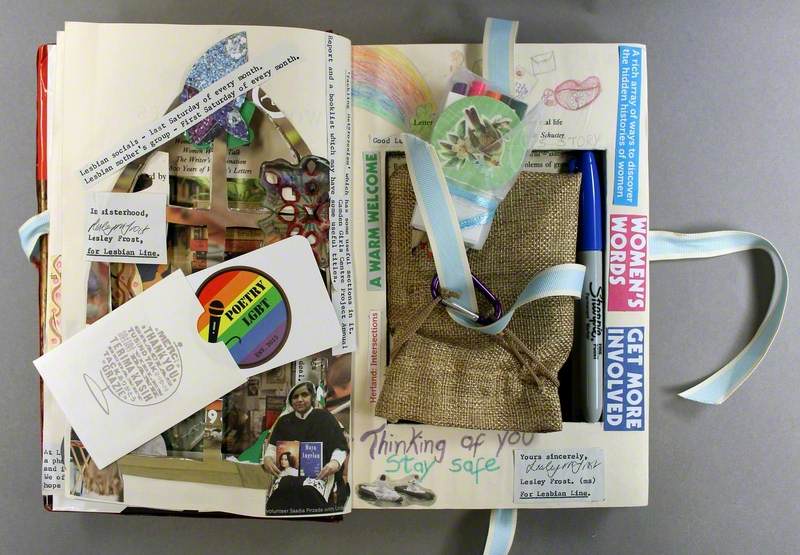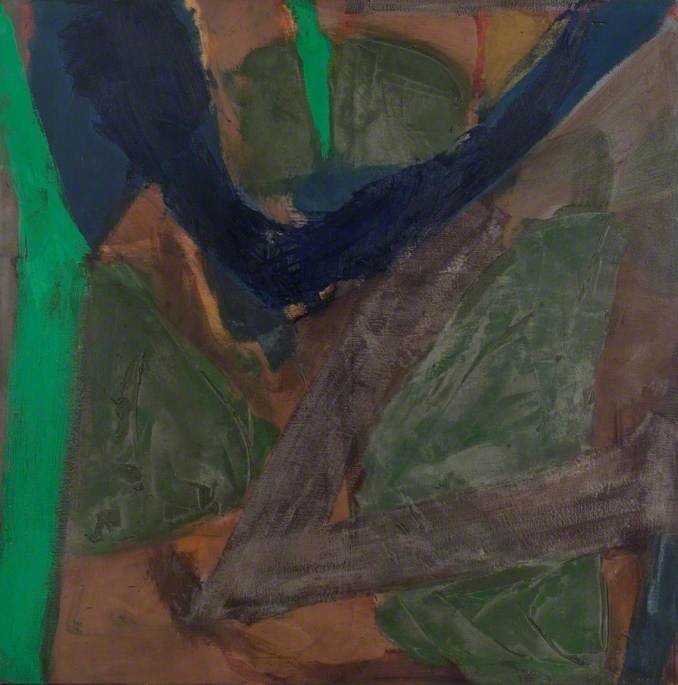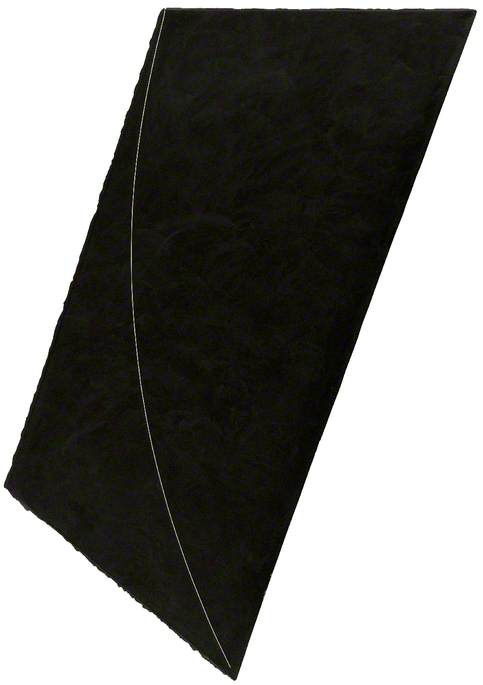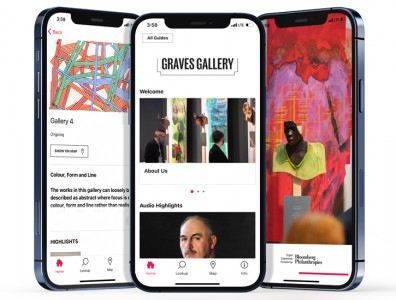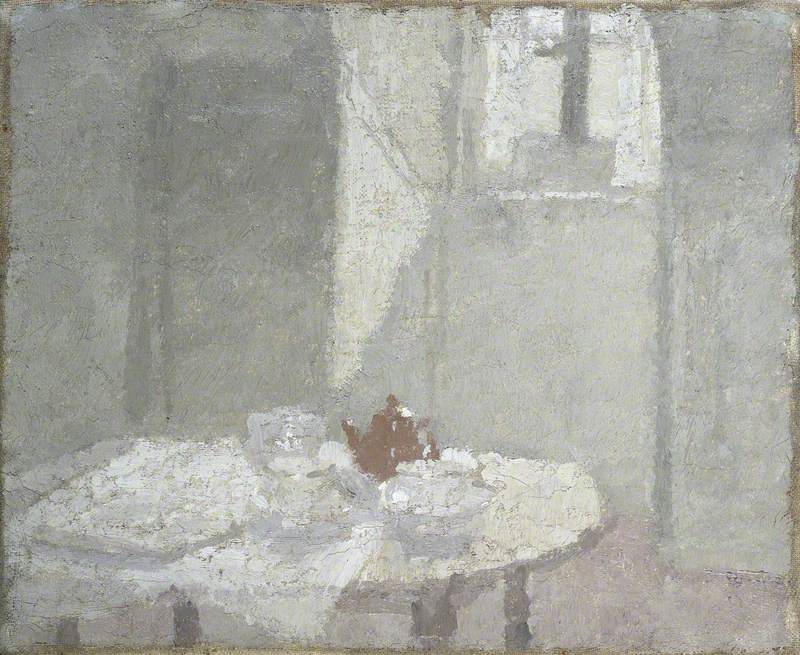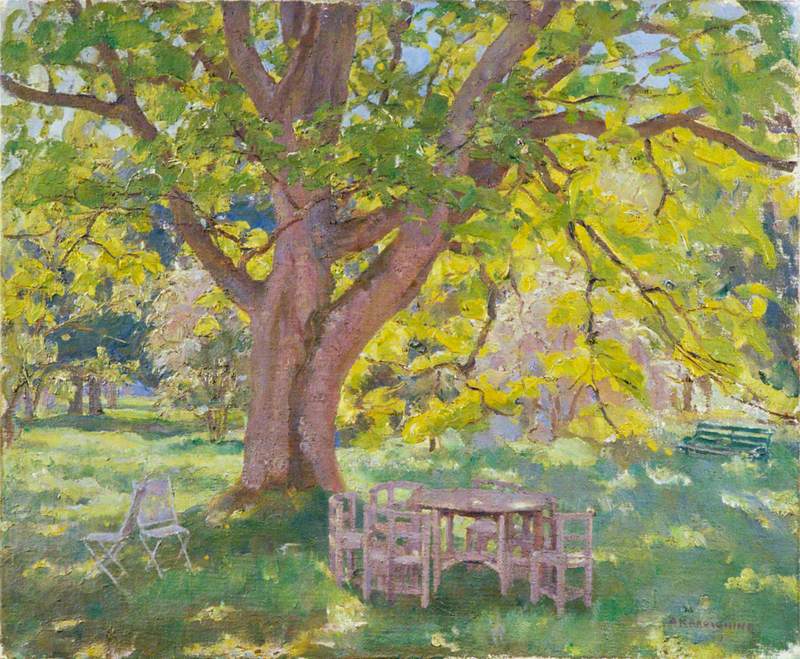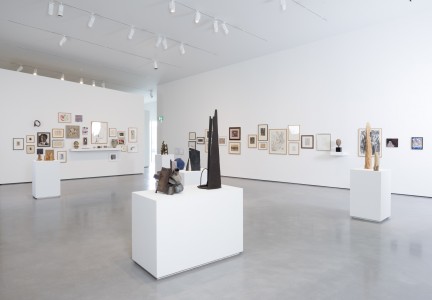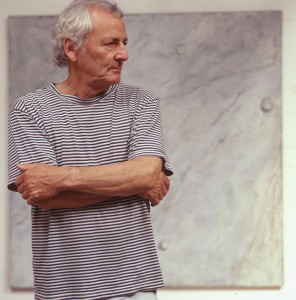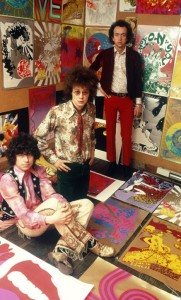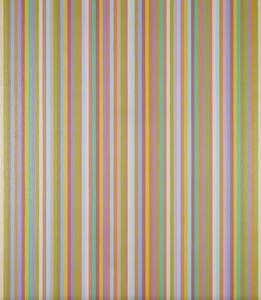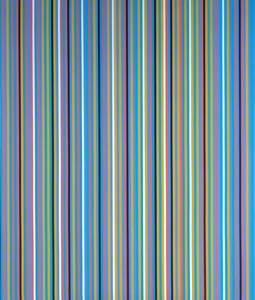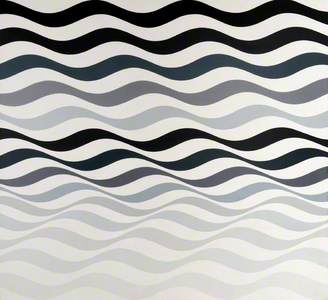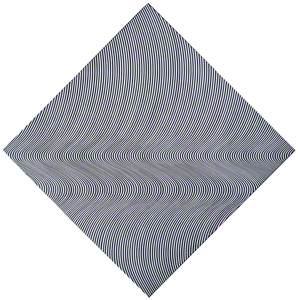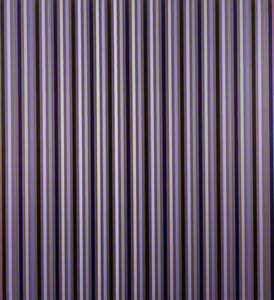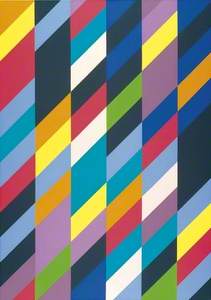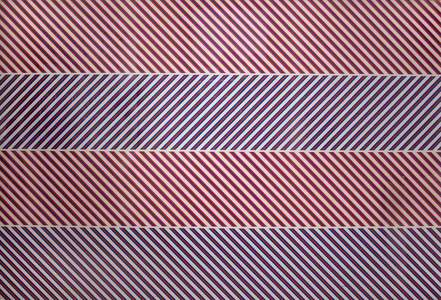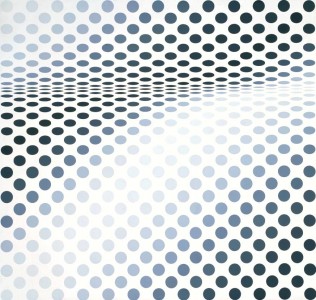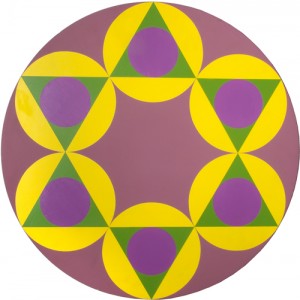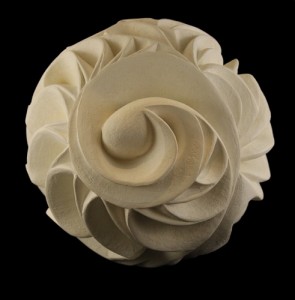Bridget Riley is one of Britain’s leading living artists and is best known as a pioneer of Op Art, a form of abstract art that focuses on the optical properties of colour, and of varied repetitions of lines and other motifs. Earlier exponents of what was later called Op Art were Victor Vasarely and Josef Albers, but Riley’s research interests went back to the work of the Post-Impressionists, Van Gogh, Cézanne and Seurat. Their response to new scientific colour theories led to the use of broken brushstrokes and dabs of colours to create new optical effects.
Riley was born in 1931, the daughter of a commercial printer and spent the pre-war years in Cornwall. Her father was a prisoner-of-war of the Japanese in the Second World War, and the artist’s formative influence was her aunt, Bertha Joyce, who had herself studied art. At school, and from 1949 to 1952 at Goldsmiths and then at the Royal College of Art, Riley studied the Impressionists and Van Gogh. But her artistic development was interrupted by a nervous breakdown and a period at home in Lincolnshire.
On her return to London in 1956, the American Abstract Expressionists had a strong impact on her. On a visit to Italy, she discovered the Italian Futurists, black and white marble churches and early Renaissance frescoes.
Following early paintings in a Post-Impressionist style, in 1960 Riley began the optically vibrant black and white paintings that she developed alongside her close friend Peter Sedgely (see, for example, her Movement in Squares above).
Repeated elements, lines or dots, in black and white or shades of grey, were arranged to create effects of depth, movement and vibration. These instantly made her reputation and Op Art captured the public imagination. To Riley’s annoyance, her innovative and distinctive imagery was rapidly commercialised by the fashion and advertising industries of the swinging sixties.
By the mid-1960s, Riley had been represented in several significant international exhibitions, most notably the 1965 'Responsive Eye' show at the Museum of Modern Art New York. In the same year her first solo exhibition in New York was sold out. In 1968 she won an International Painting Prize at the Venice Biennale, representing Britain.
In the mid-1960s the introduction of wave forms into Riley’s work, as seen in Cataract 3, created a new set of possibilities, especially when combined with a cautious use of colour. The interactions of different tones, often complementaries such as vermilion and turquoise, added variation to her earlier use of black and white.
Wave forms were succeeded by stripes in the later 1960s and early 1970s (such as in Rise 1), the stripes themselves often composed of tightly interwoven diagonals, adding another layer of complexity to their effects.
Through the 1970s she continued to explore the infinite possibilities of different colour combinations, rhythms and proportions, as in To a Summer's Day.
A major development took place after her first trip to Egypt in 1979, which in the early 1980s inspired a distinct new spectrum of colours drawn from ancient Egyptian wall paintings, as seen in Luxor.
In the mid-1980s, a further change of motif replaced stripes and waves with diagonal lozenges, in which vertical and diagonal arrays interact, as in Conversation. In the 1990s she combined this approach with a return to the use of curves and a less programmed, freer approach to the placing of colours and shapes. This continued into the twenty-first century with works like Evoë 3.
Most recent has been a series of paintings with broader stripes of gentle colours, not separated by the white or black seen in earlier such works.
Bridget Riley has frequently made prints alongside her paintings. While the paintings are usually large, involving the viewer in an almost theatrical interaction, prints are more domestic in scale and allowed her art to reach a wider public. The new technology of the screenprint was also well-suited to her imagery; an early series of prints was even made on Plexiglas and a couple, later withdrawn, included kinetic elements. Several series of prints have been made to raise funds for galleries and charities. During 1982–1983 she designed a ballet for Ballet Rambert and she has made two sets of mural decorations for hospitals. She was a Trustee of The National Gallery in the 1980s, and in 1998 was made a Companion of Honour.
Andrew Greg, National Inventory Research Project, University of Glasgow
If you want to know more about Bridget Riley and her work, Art UK partner HENI Talks has produced the following film:
